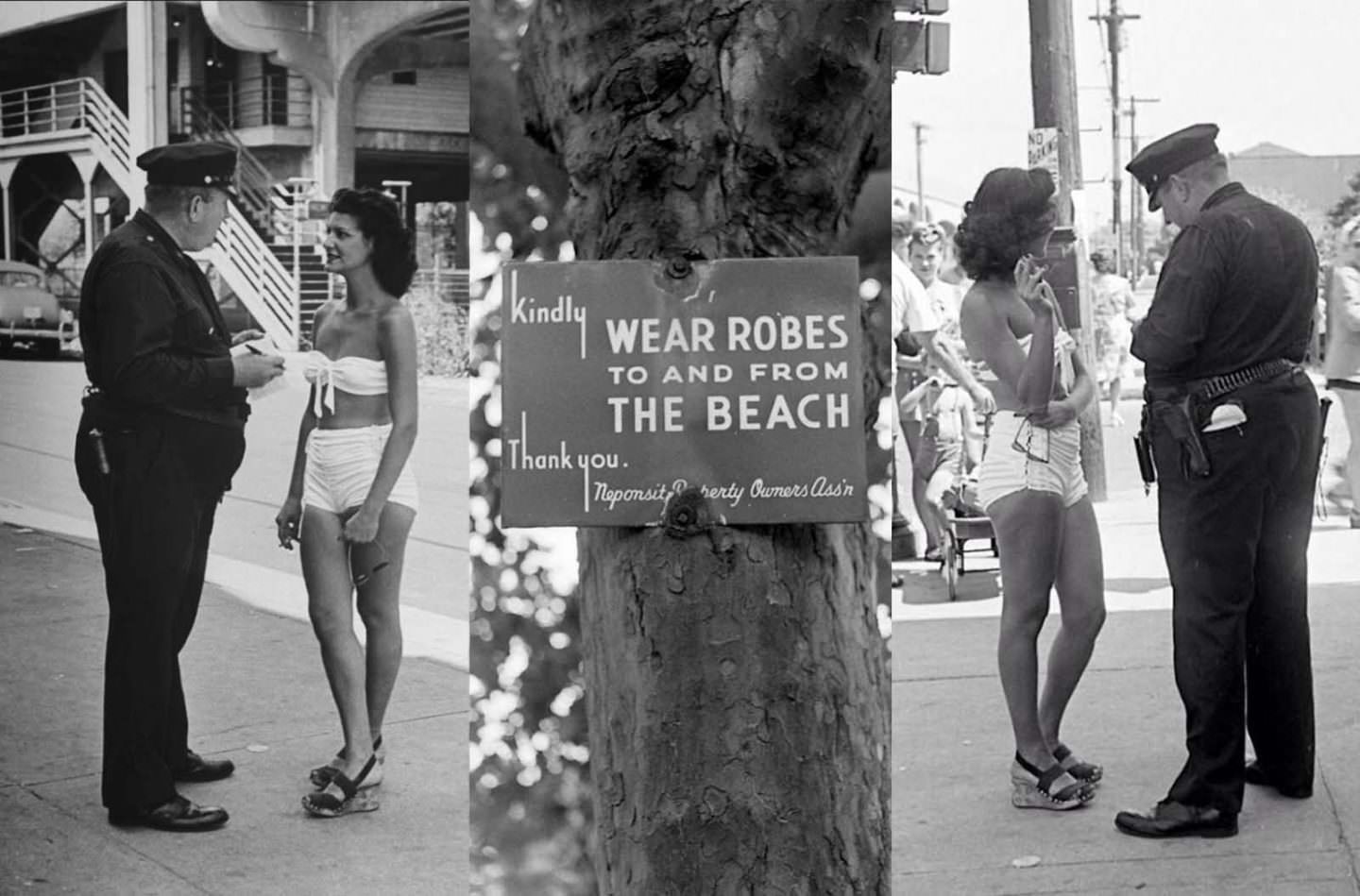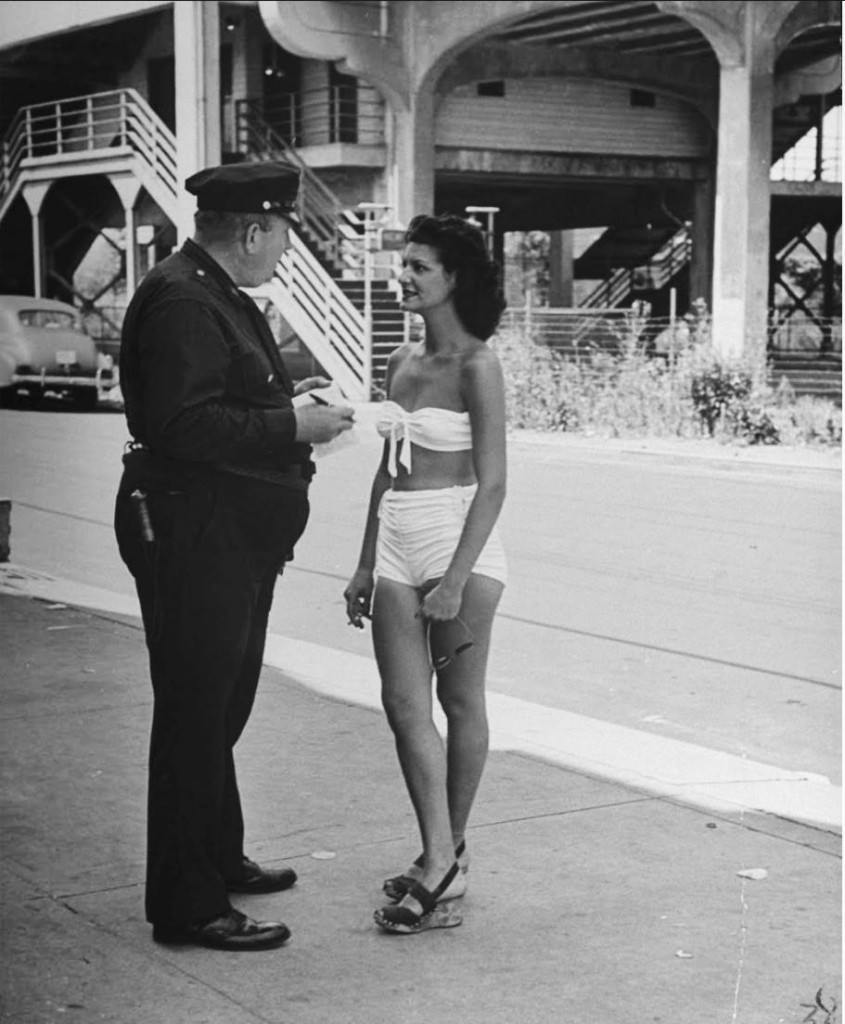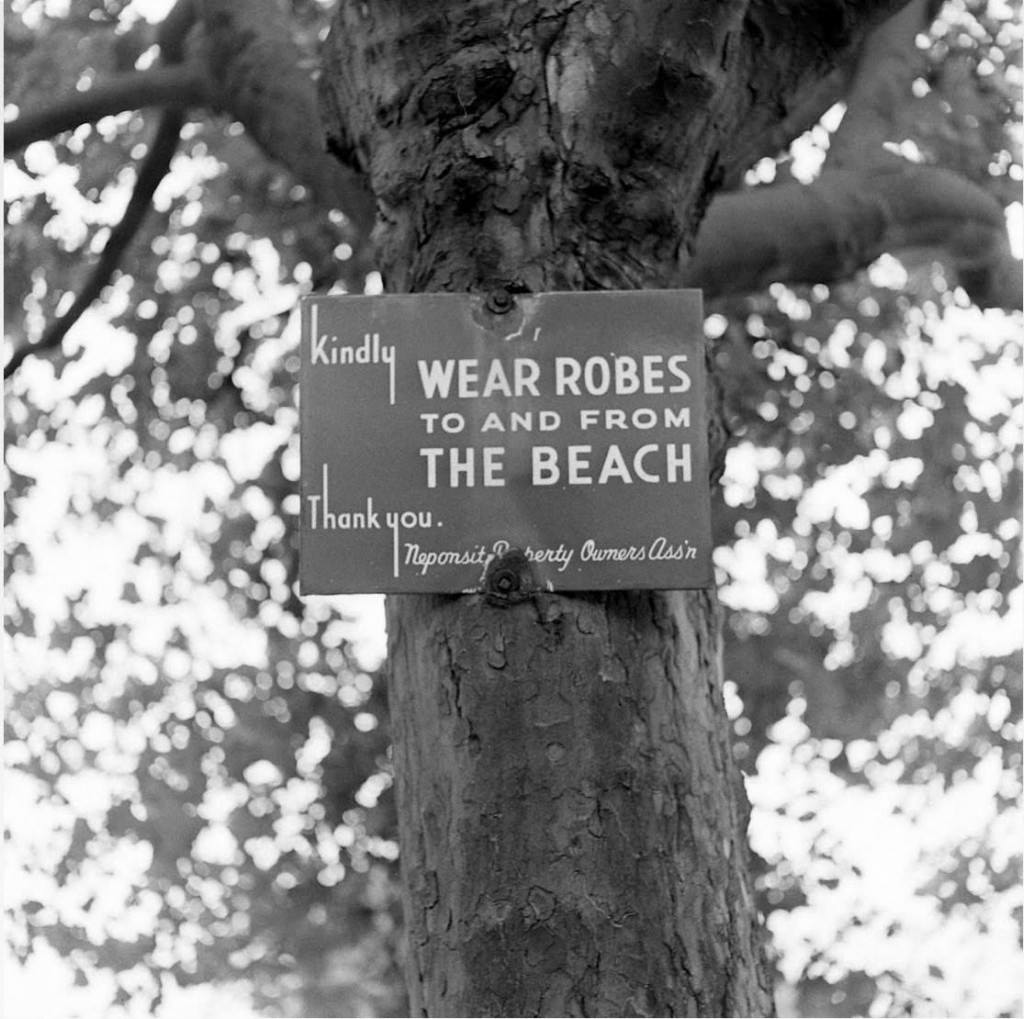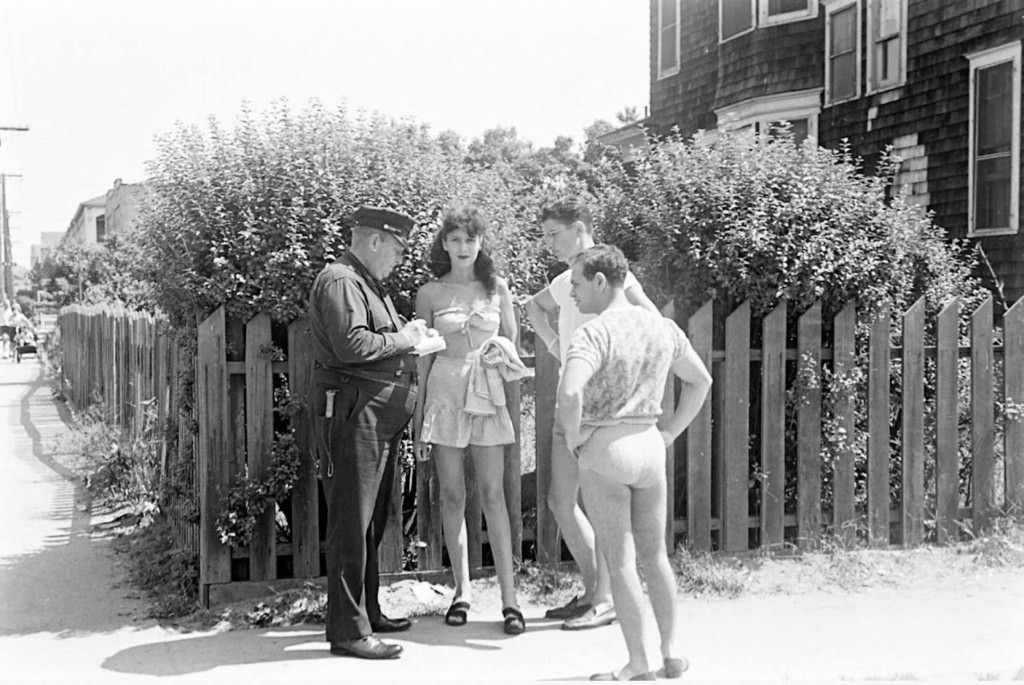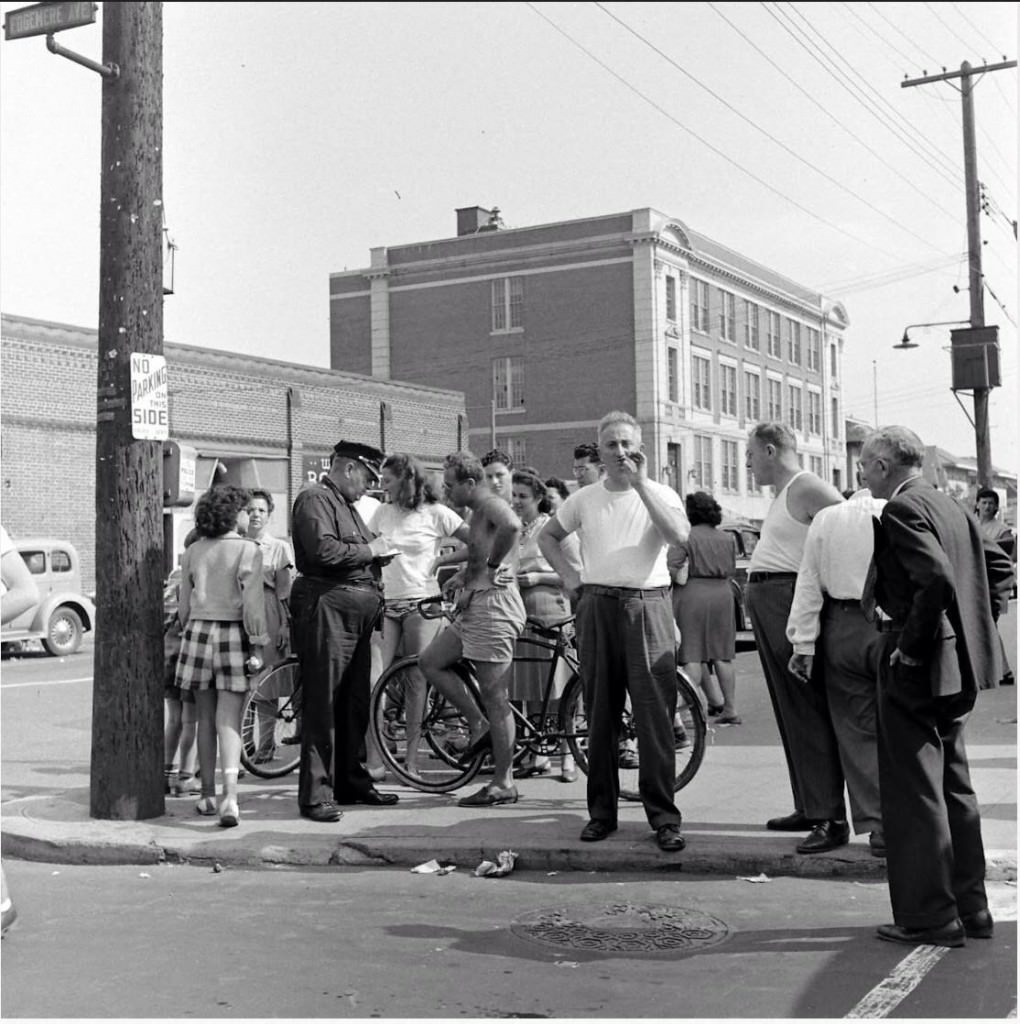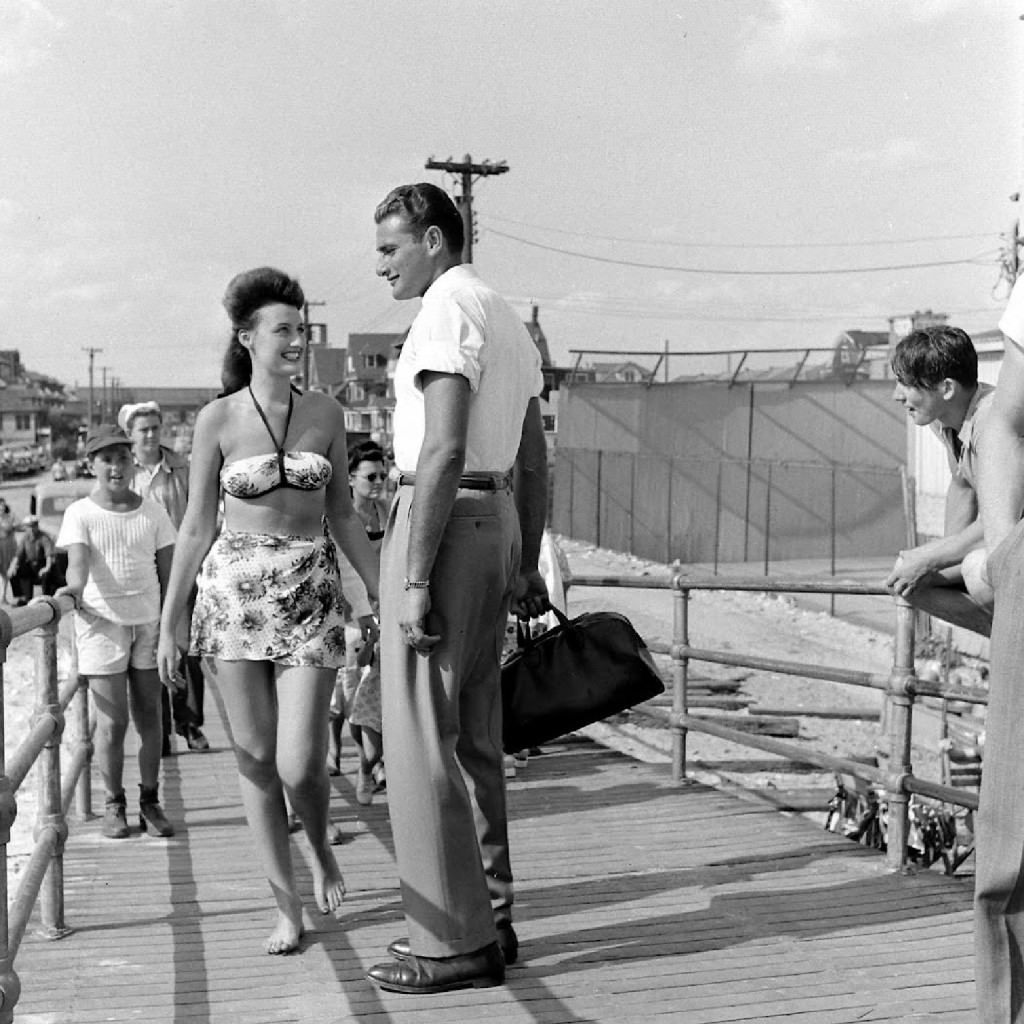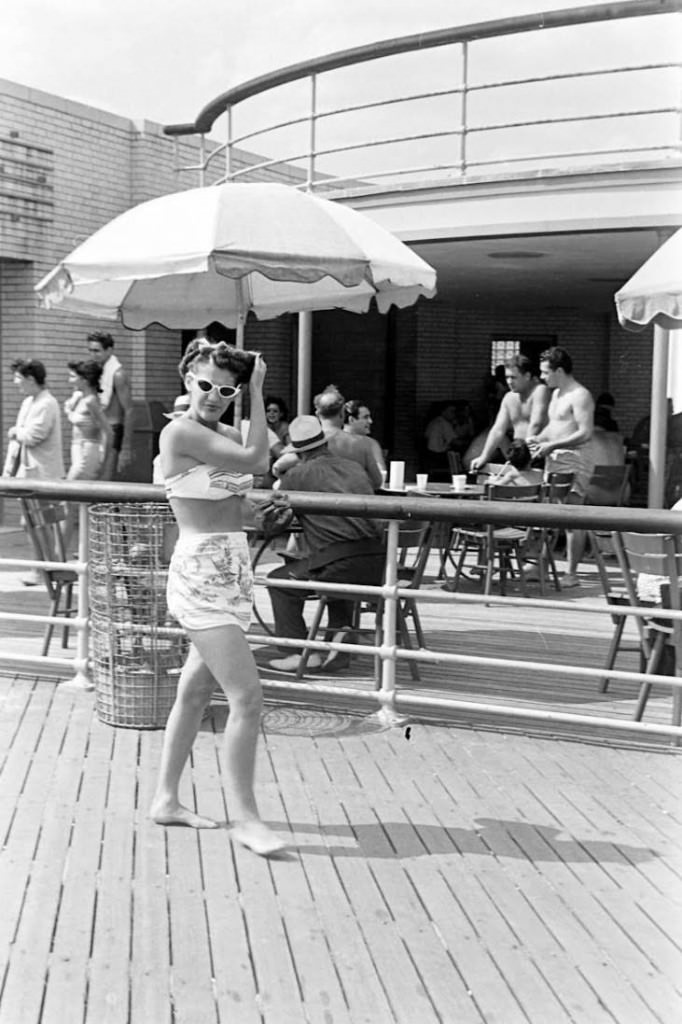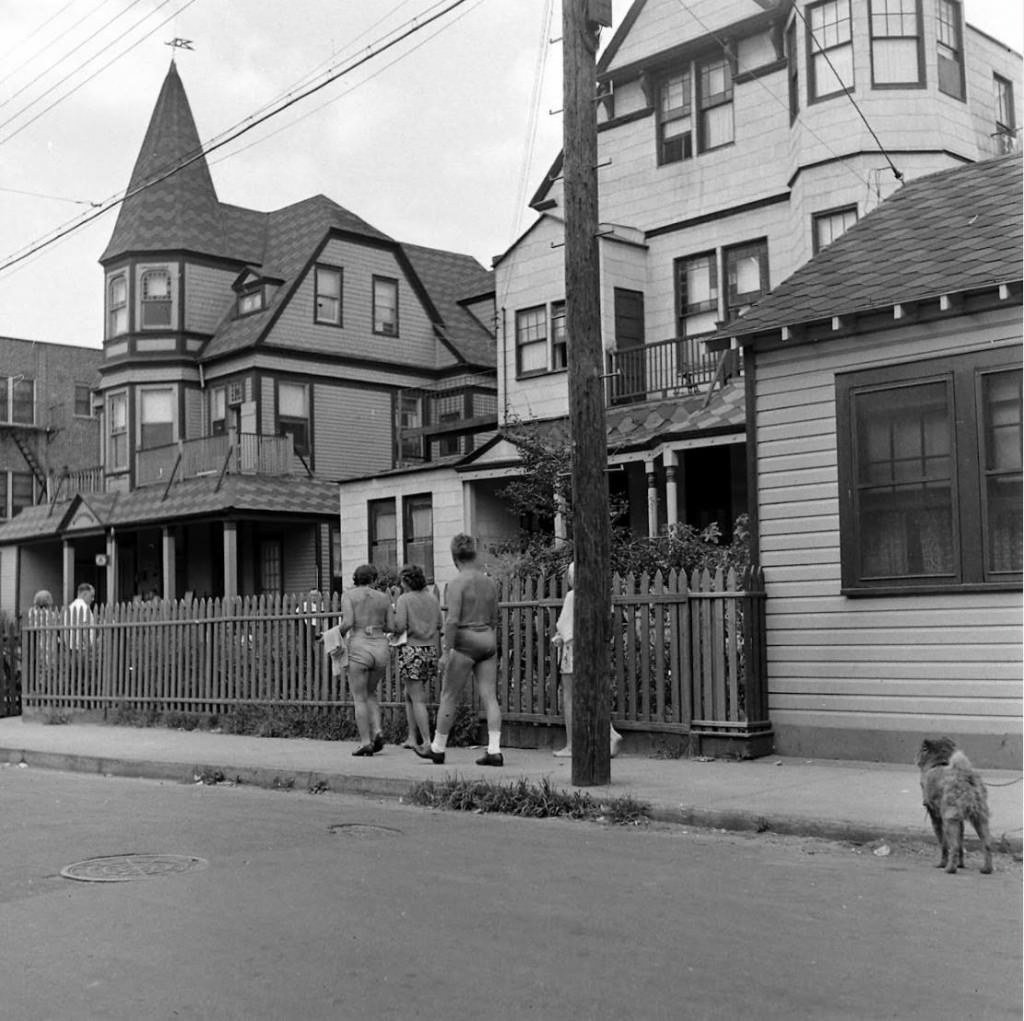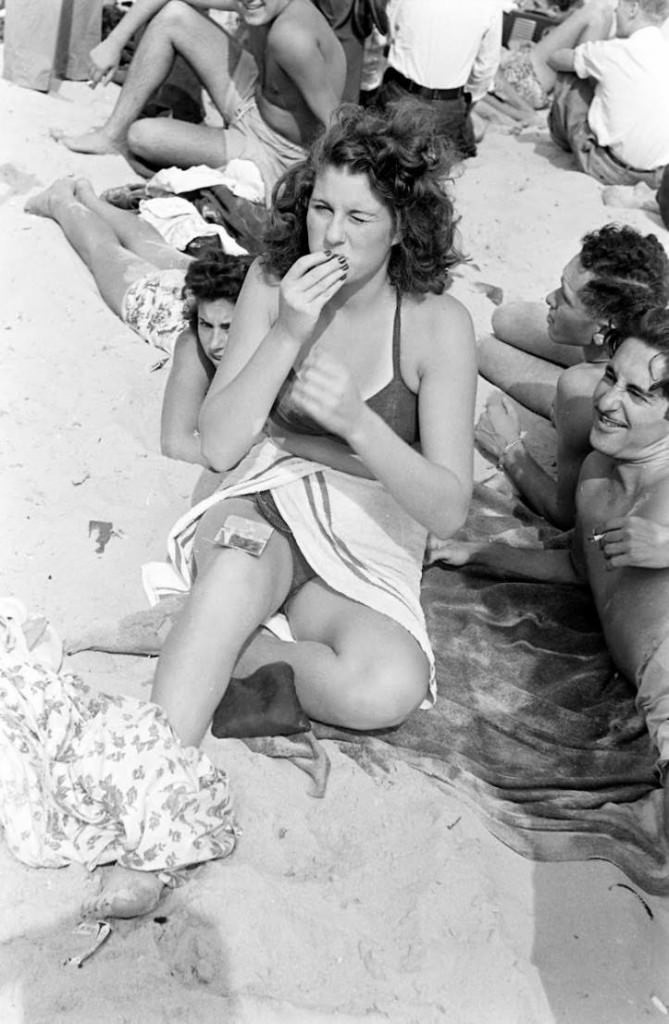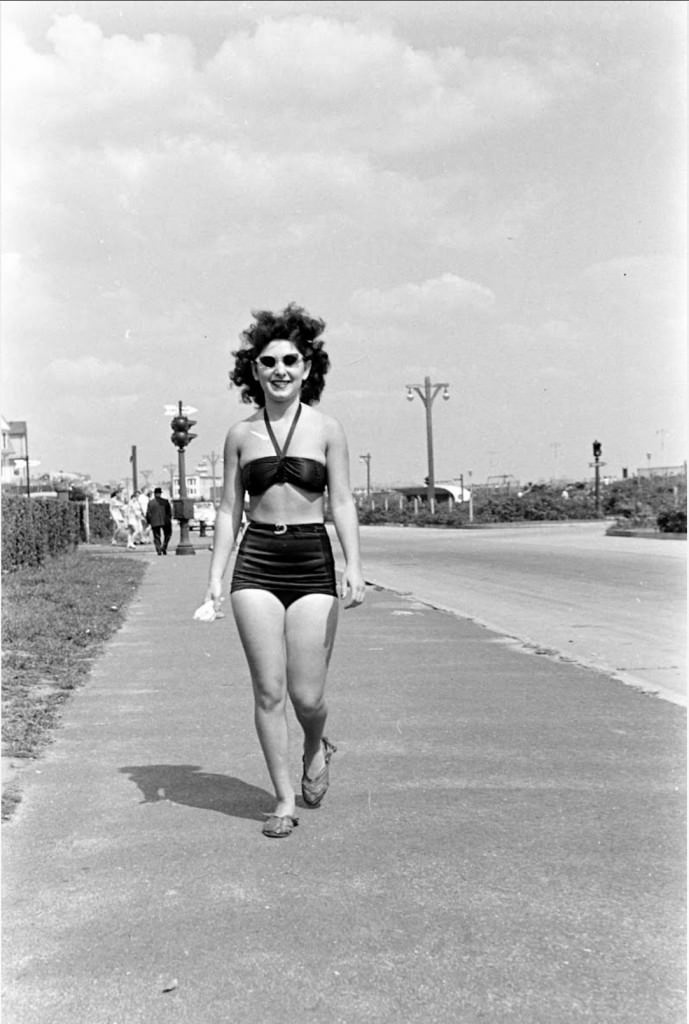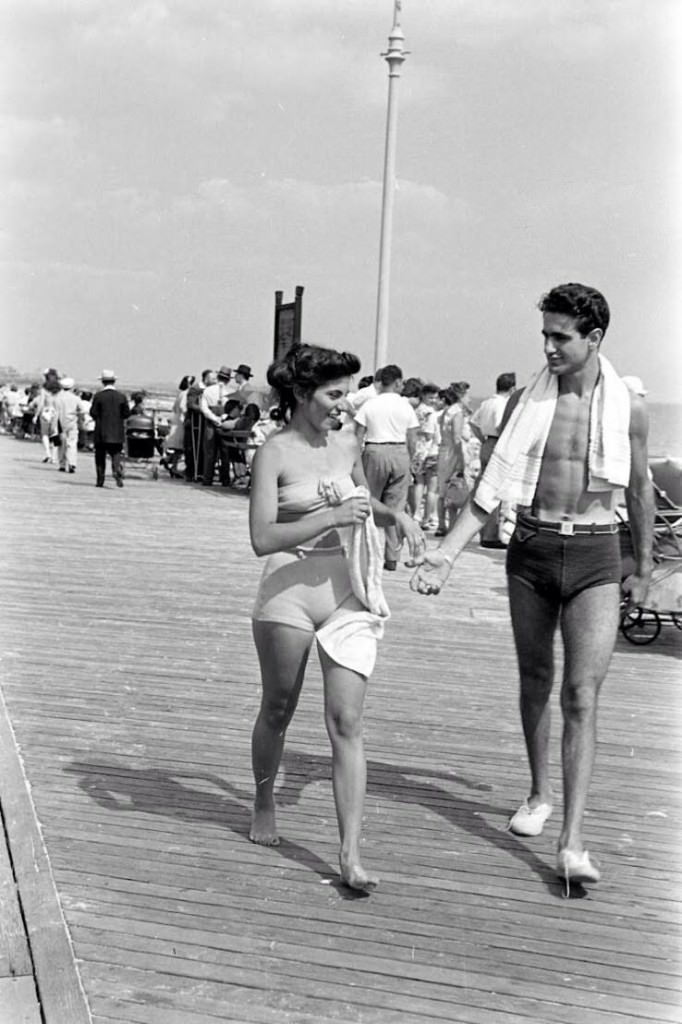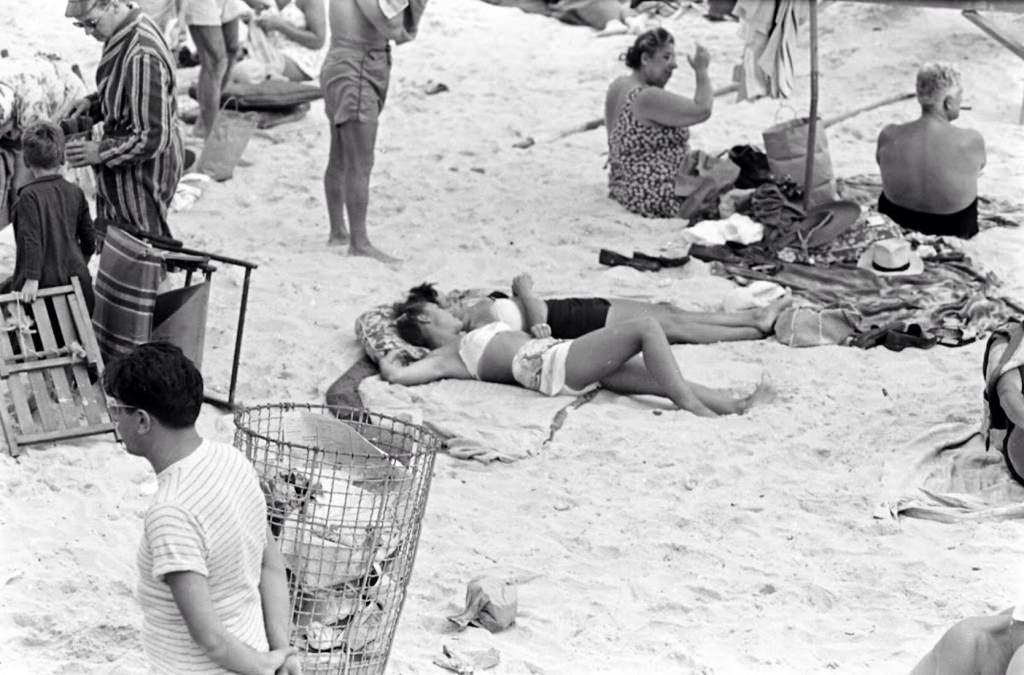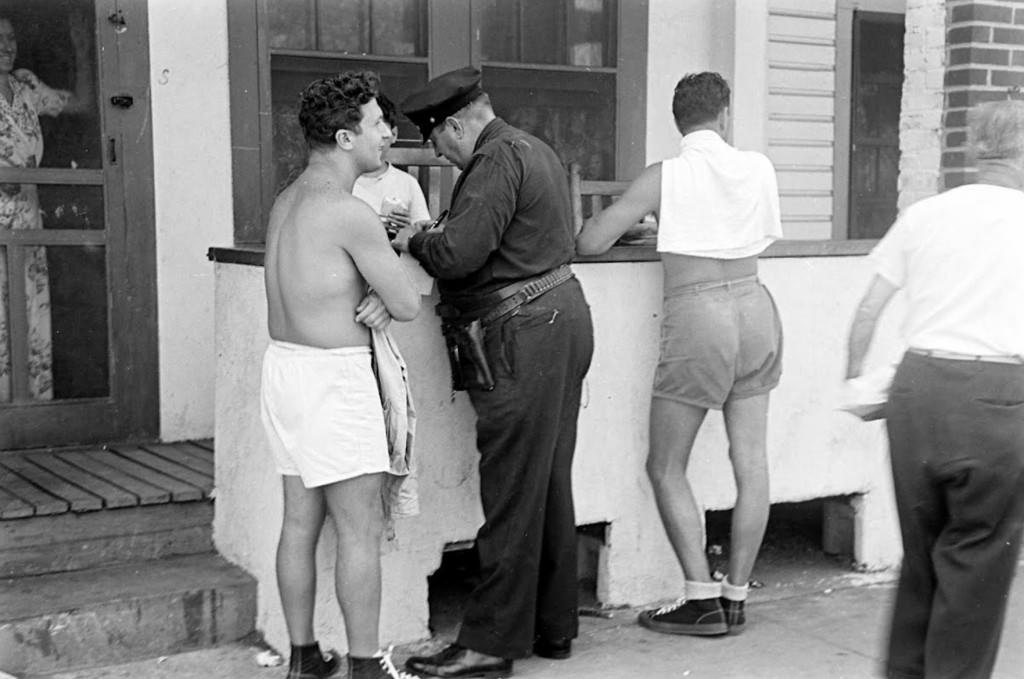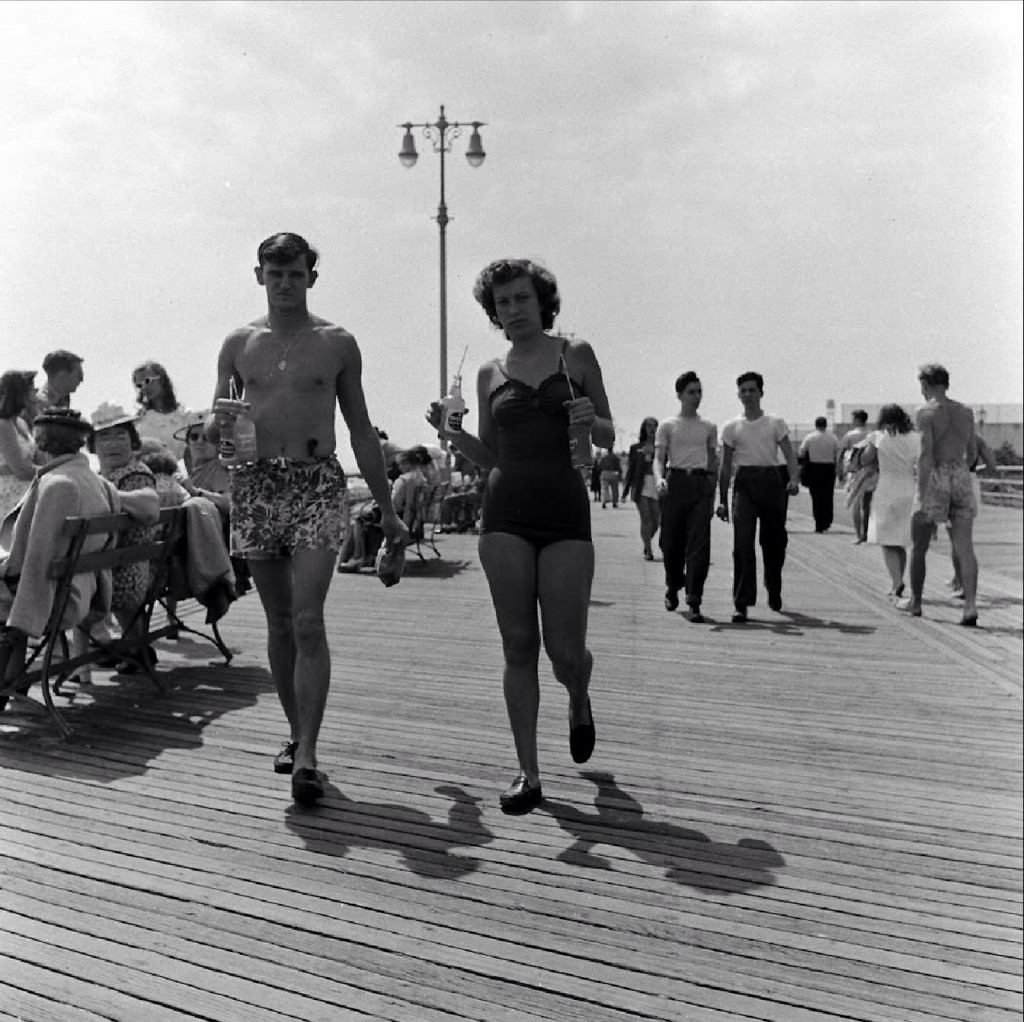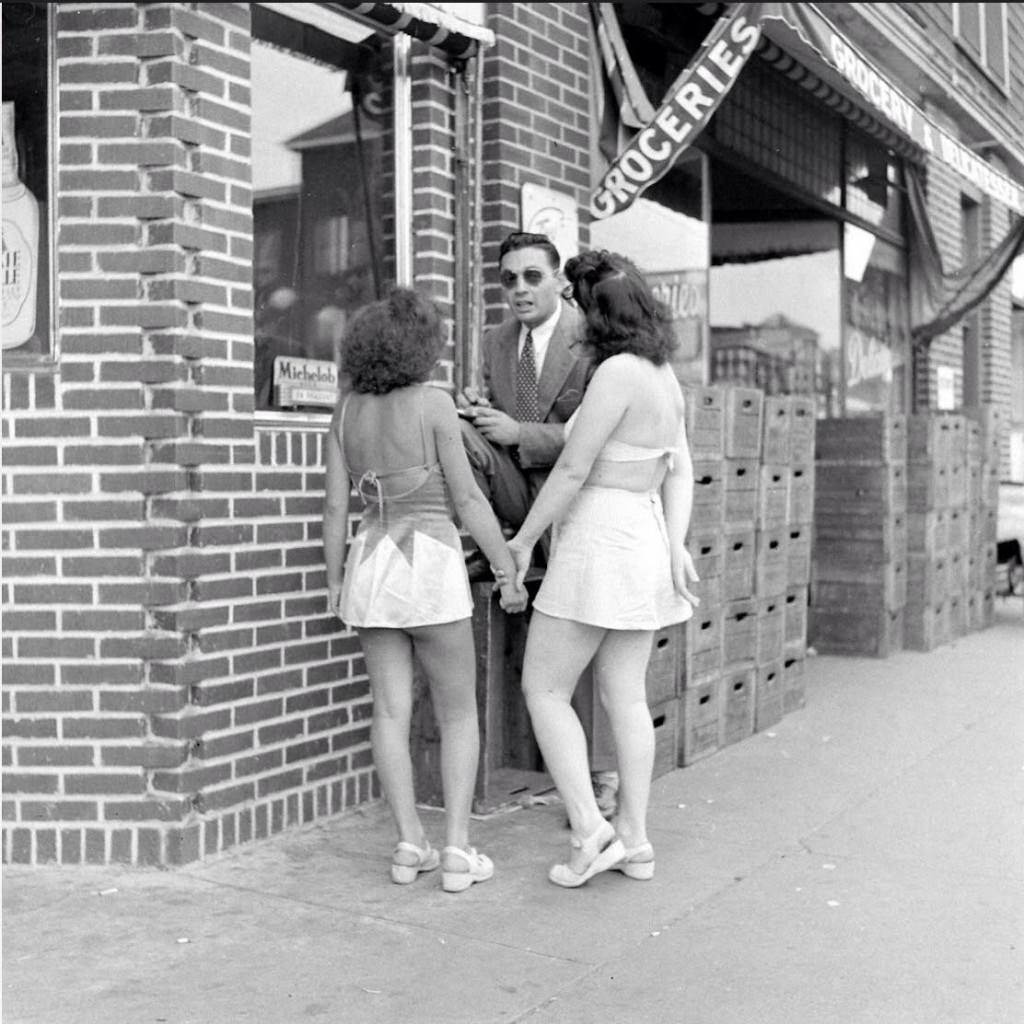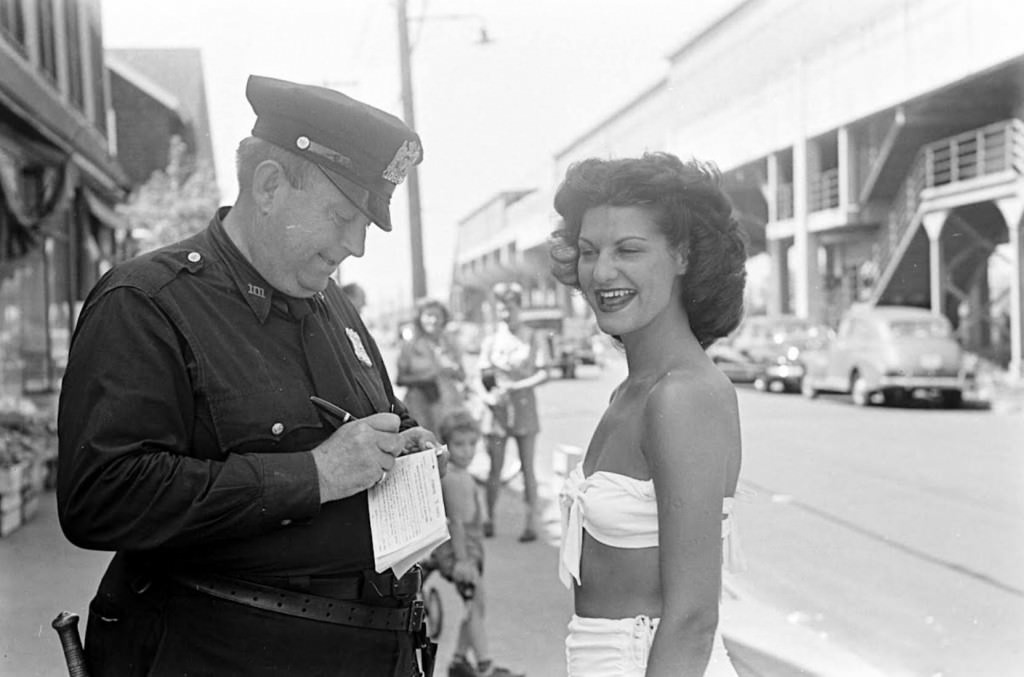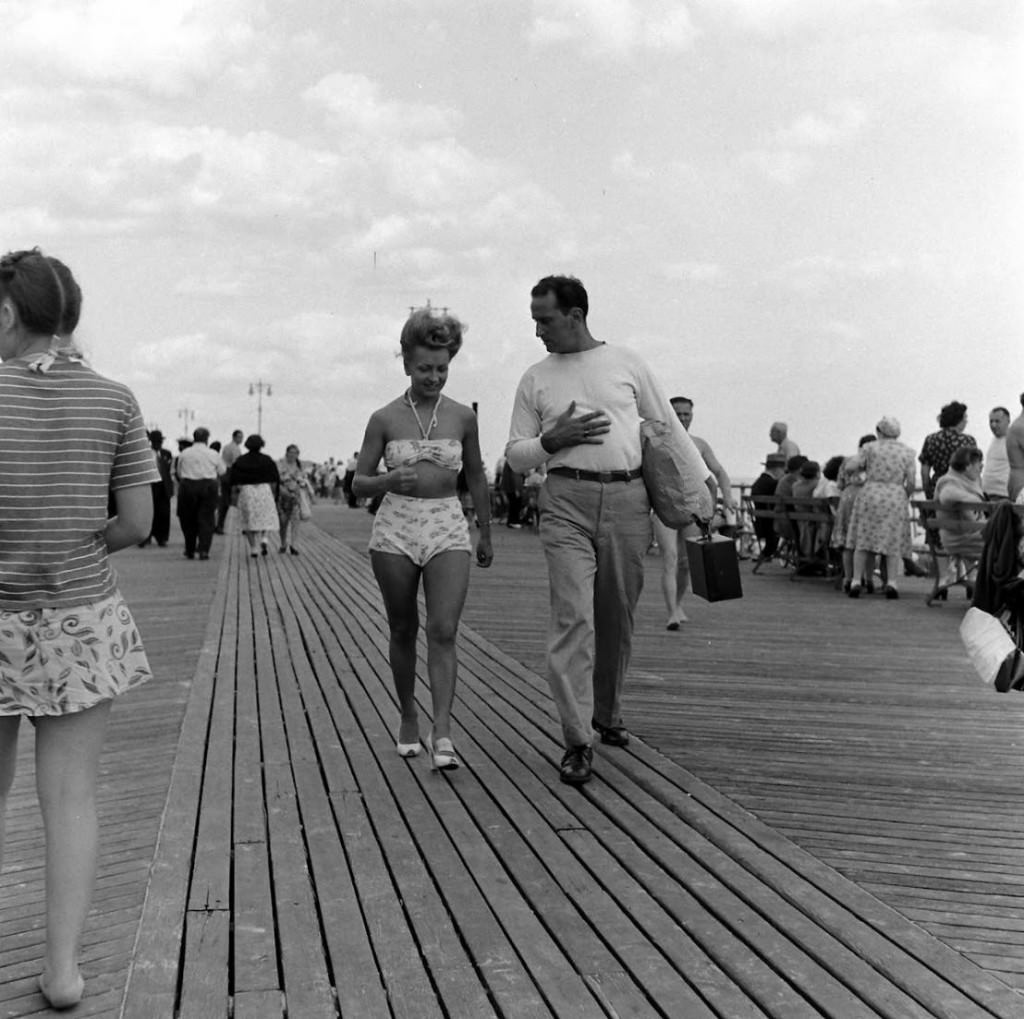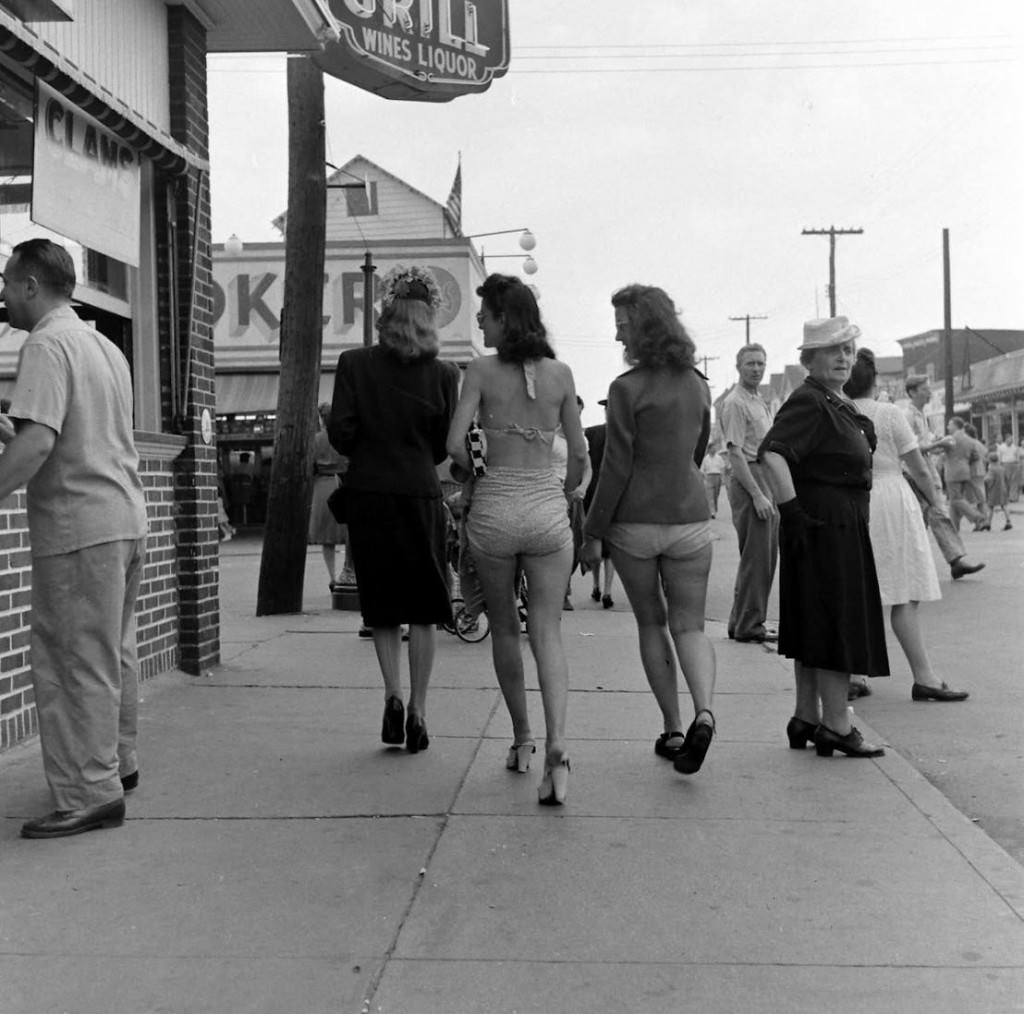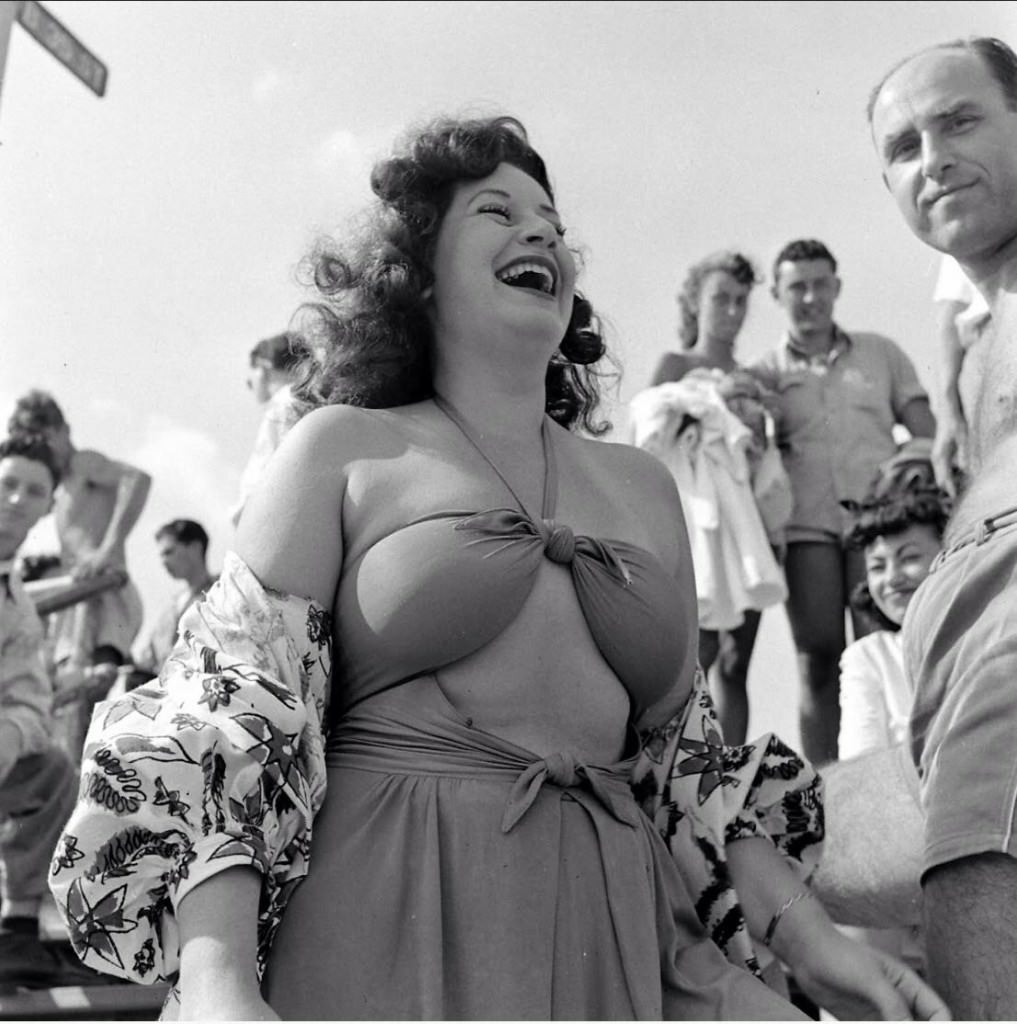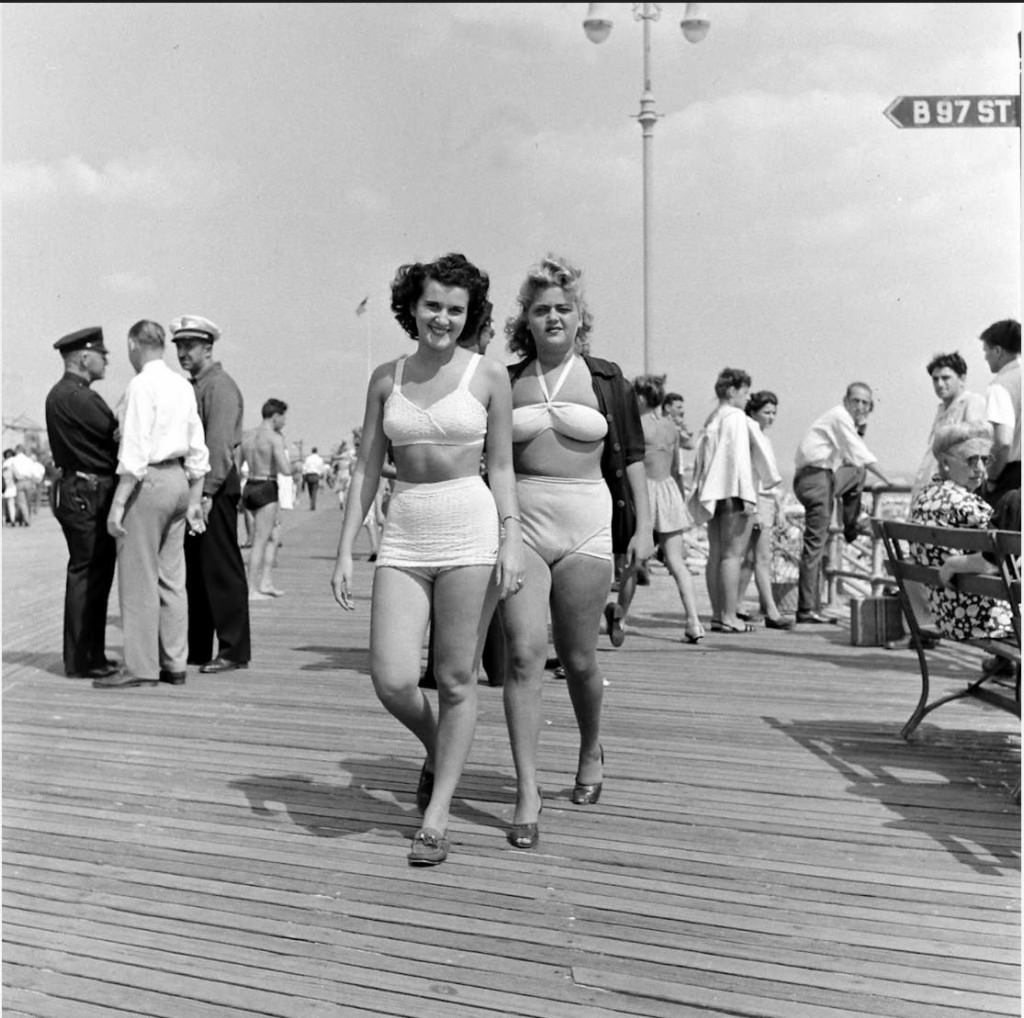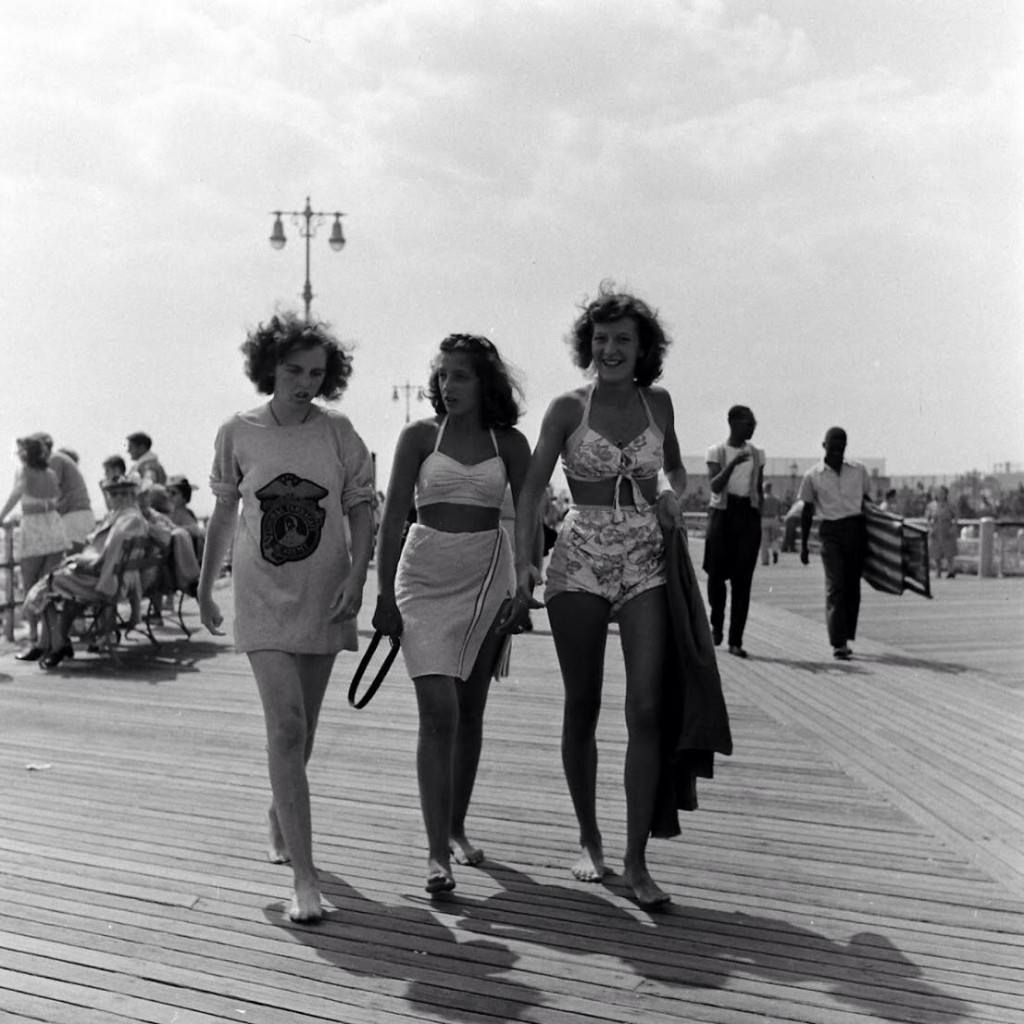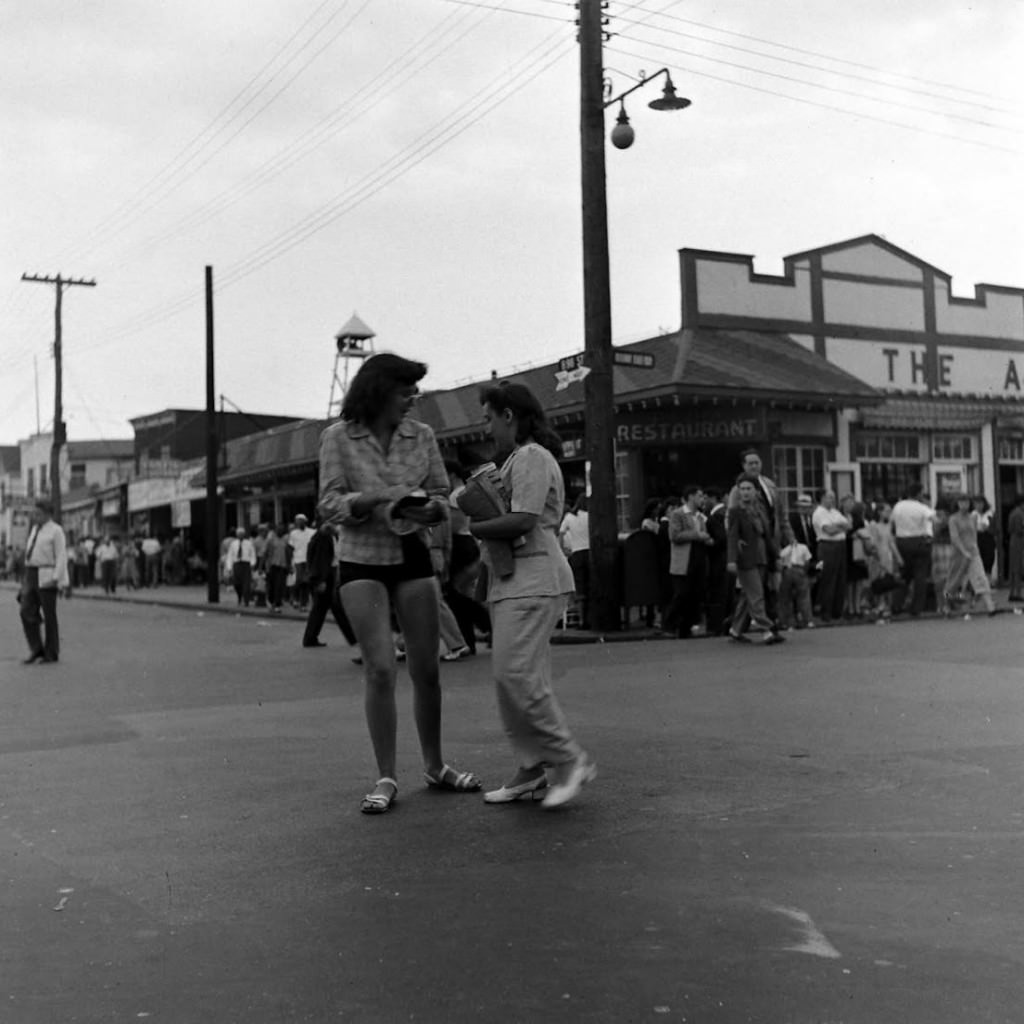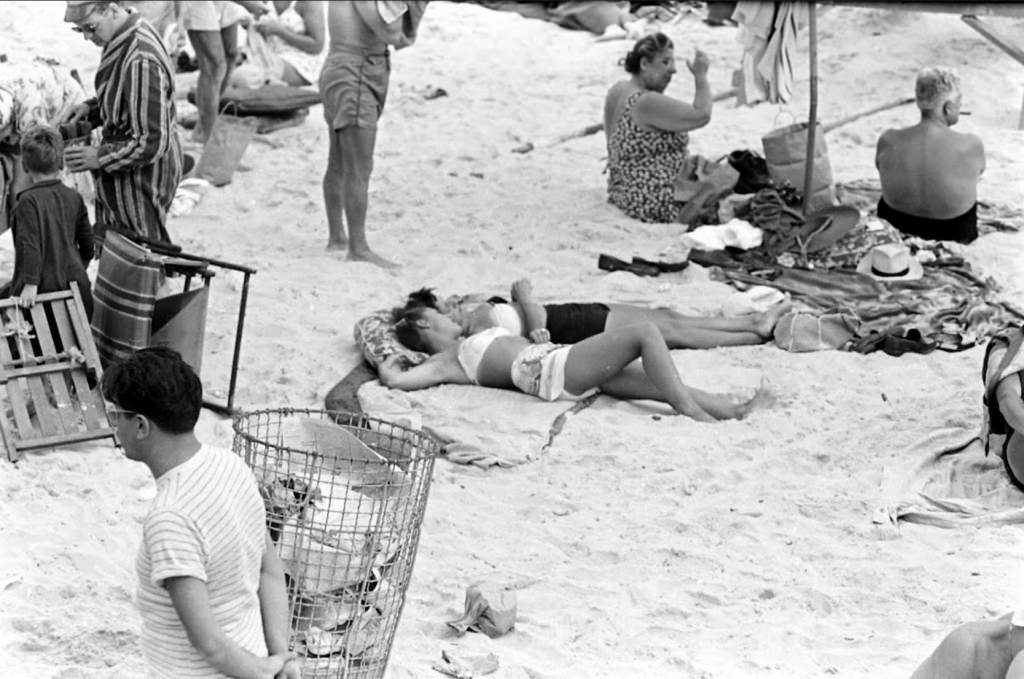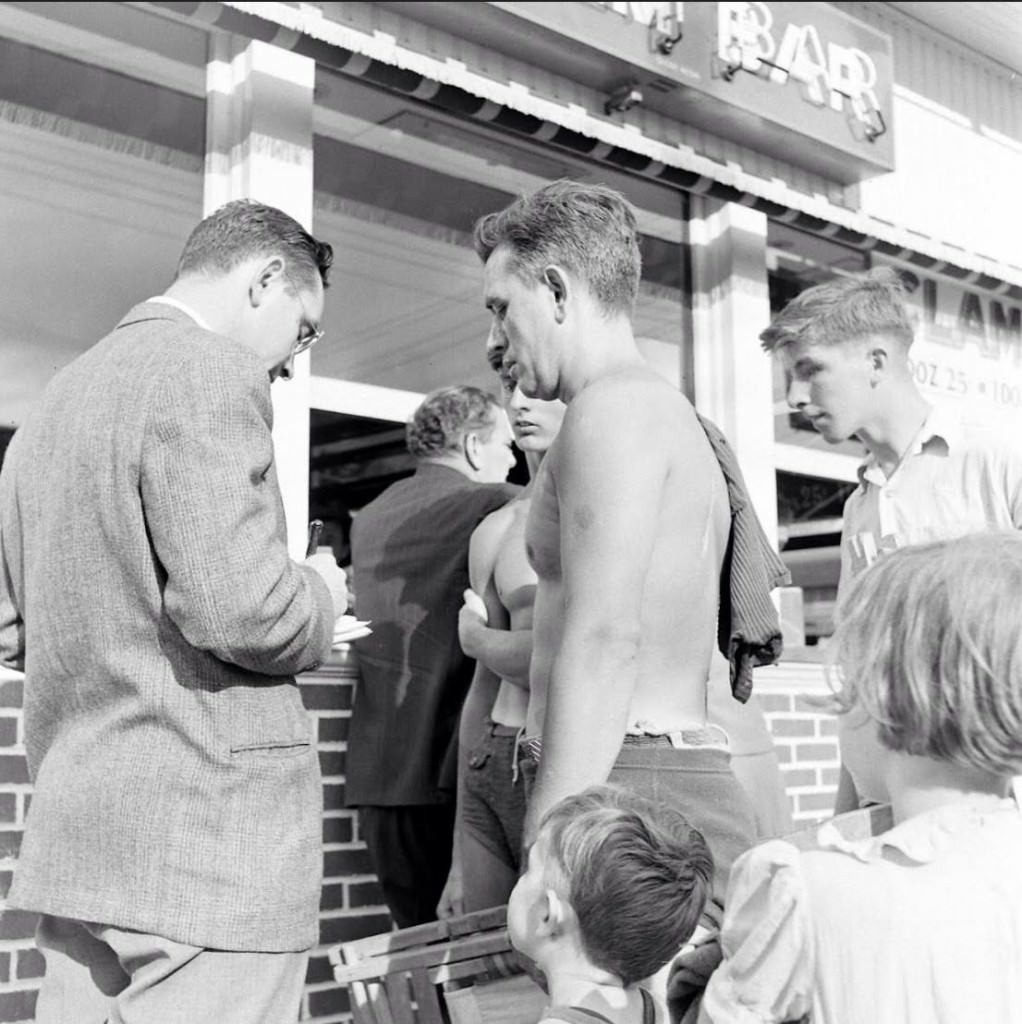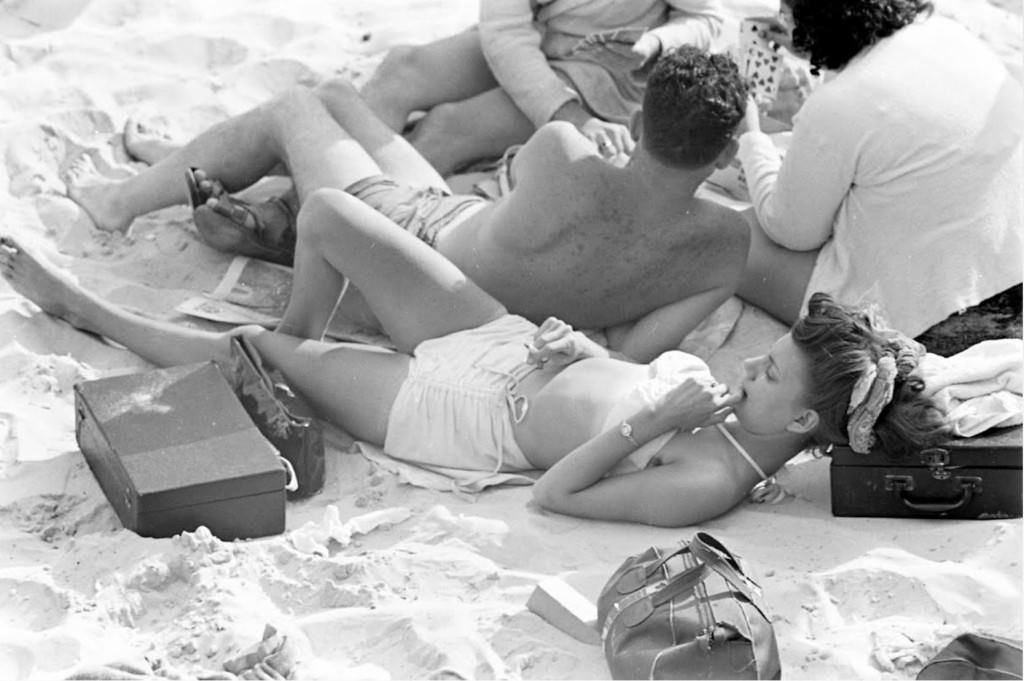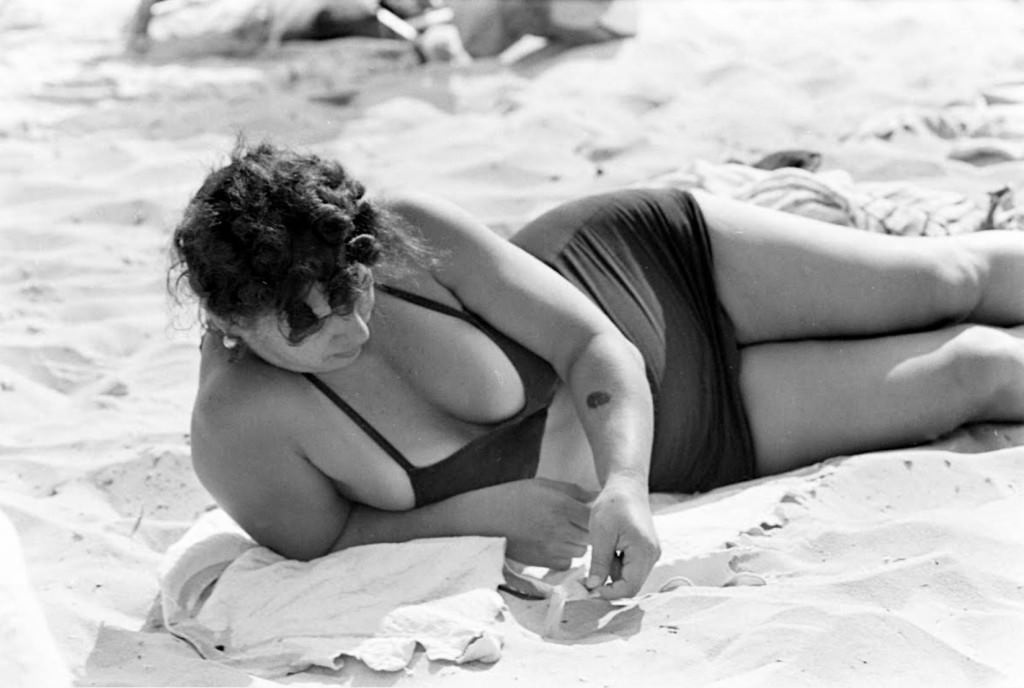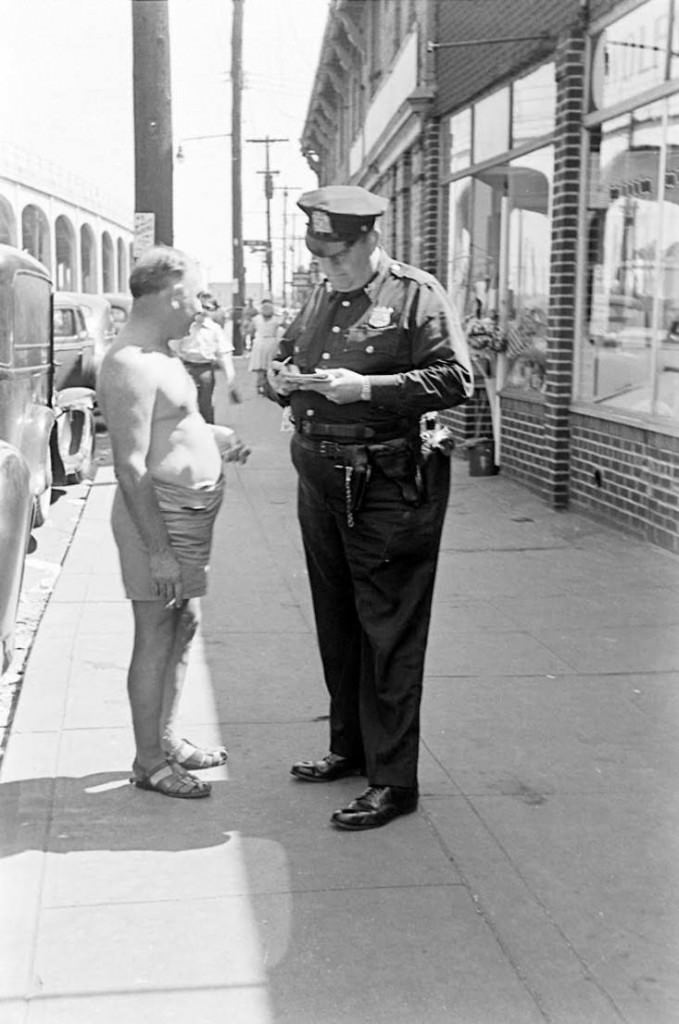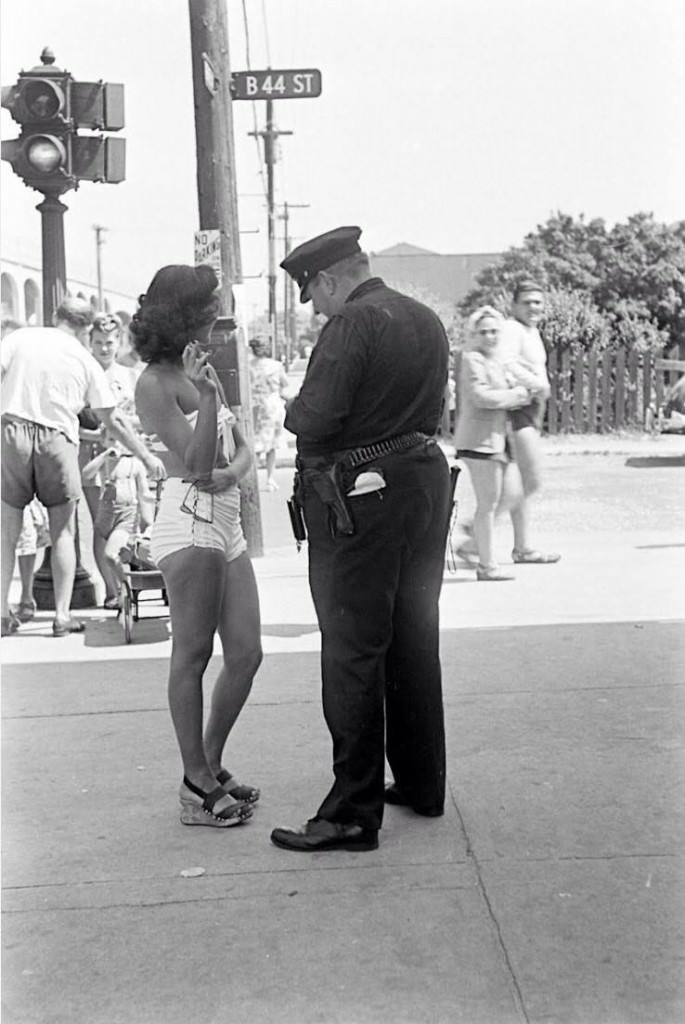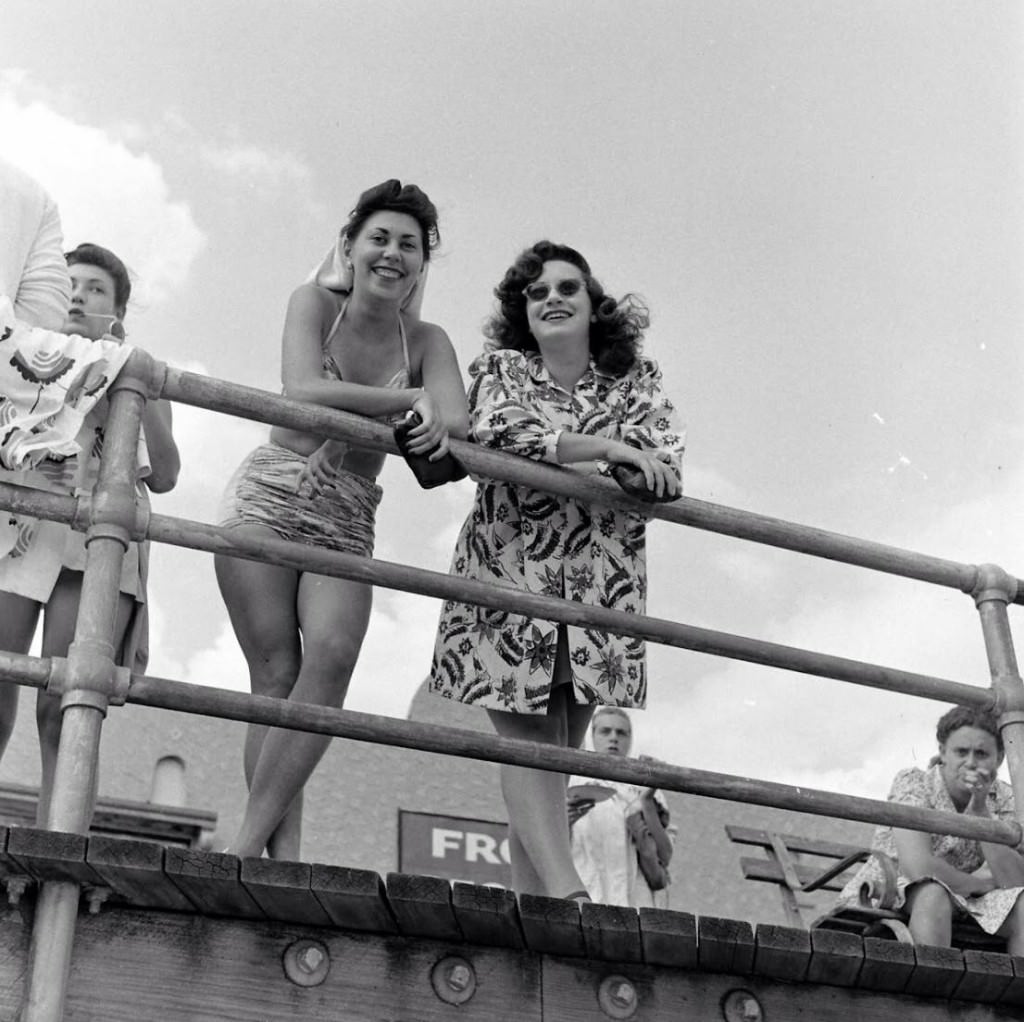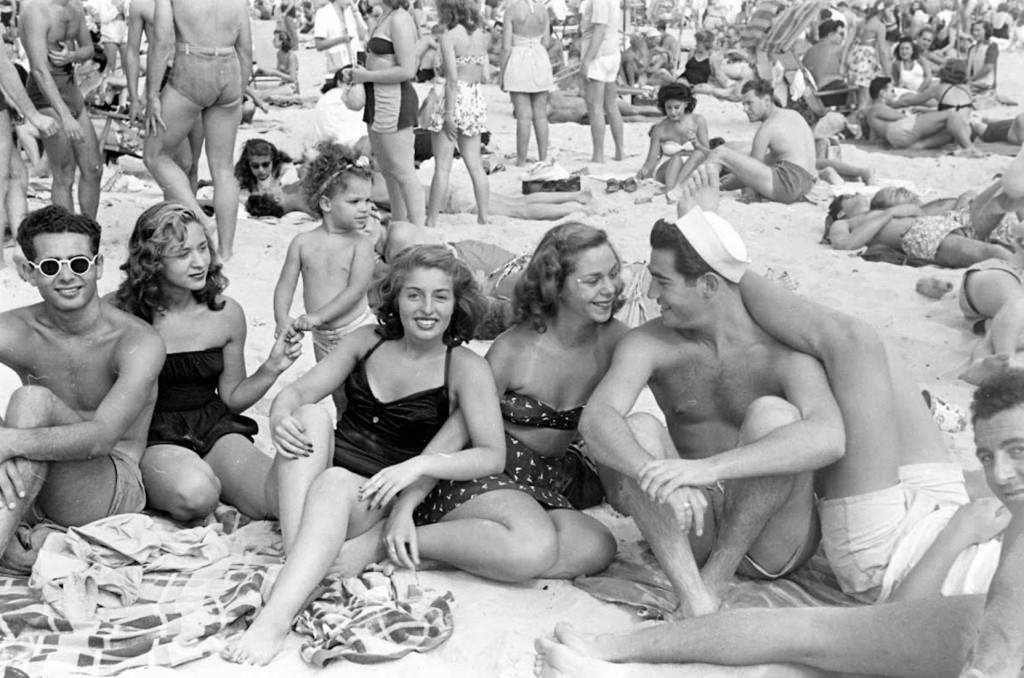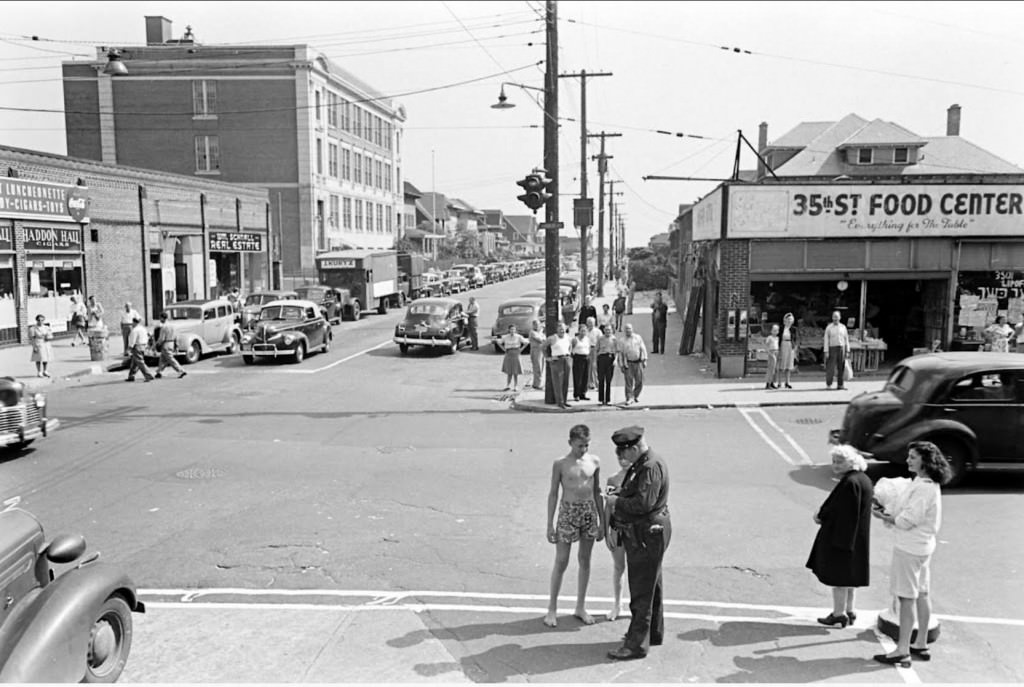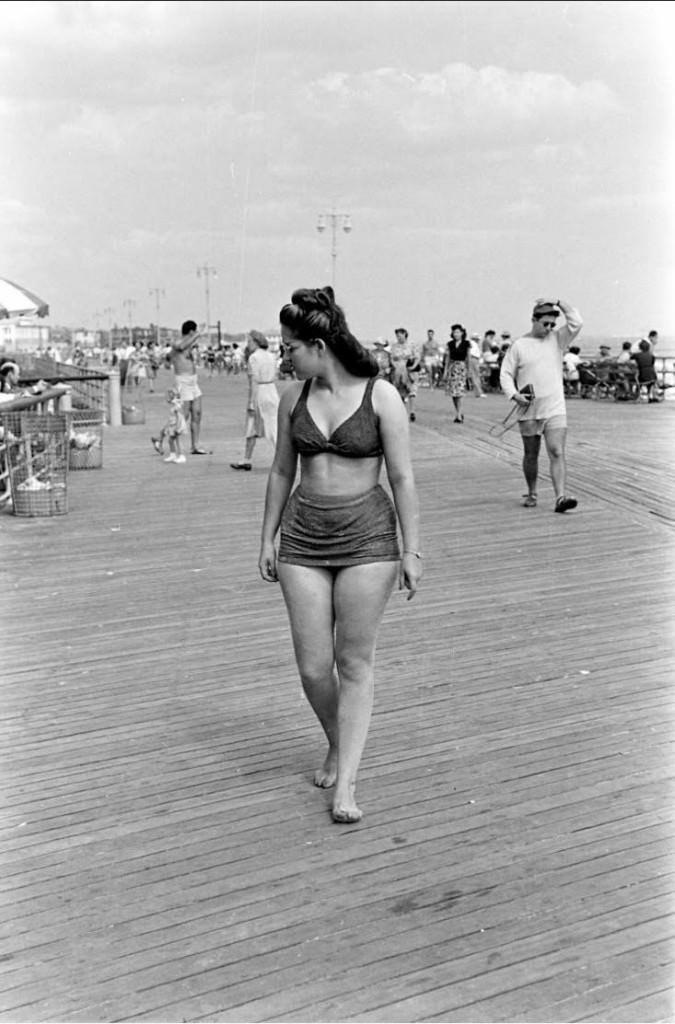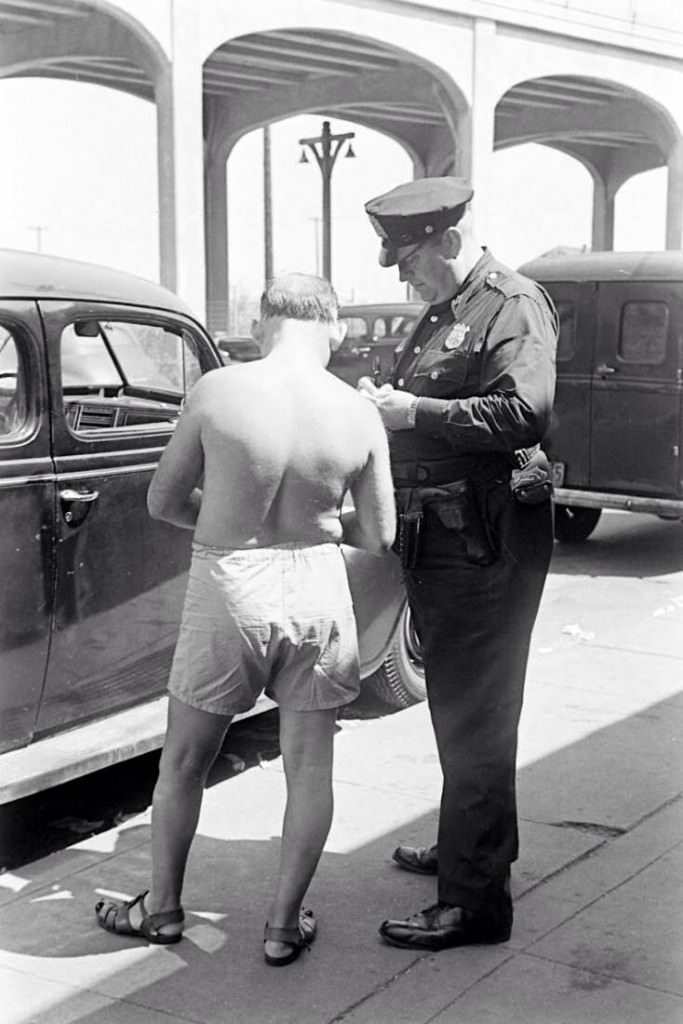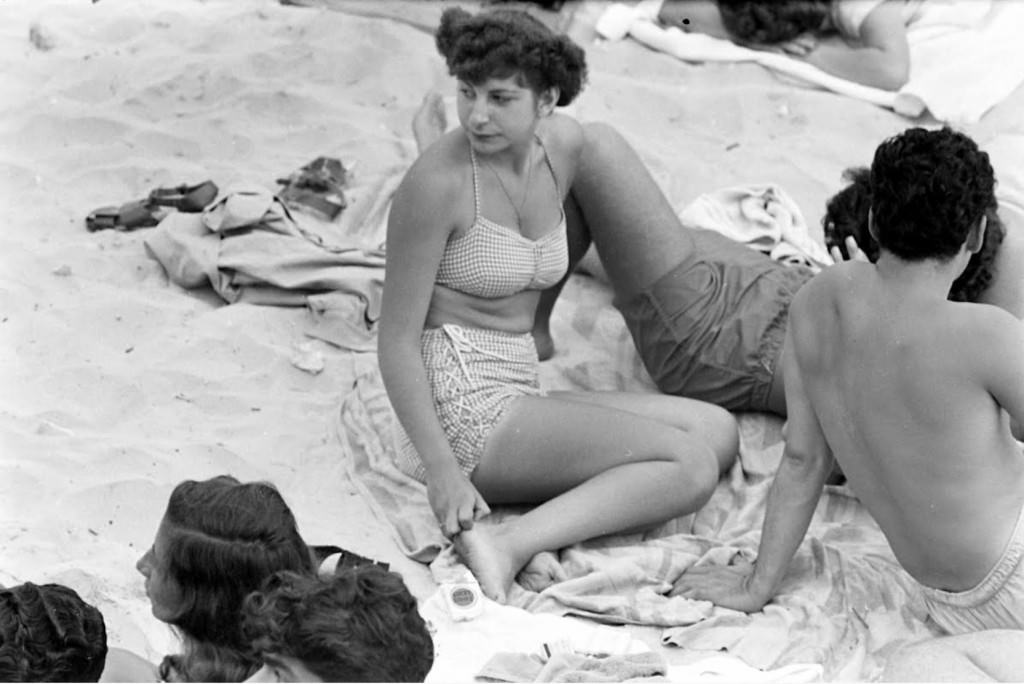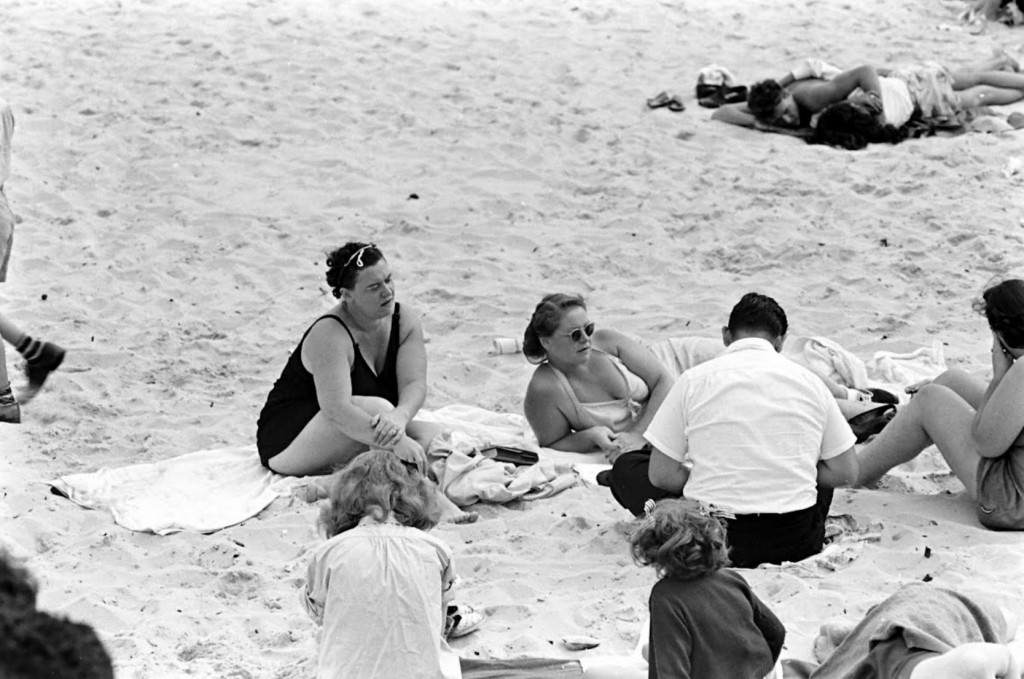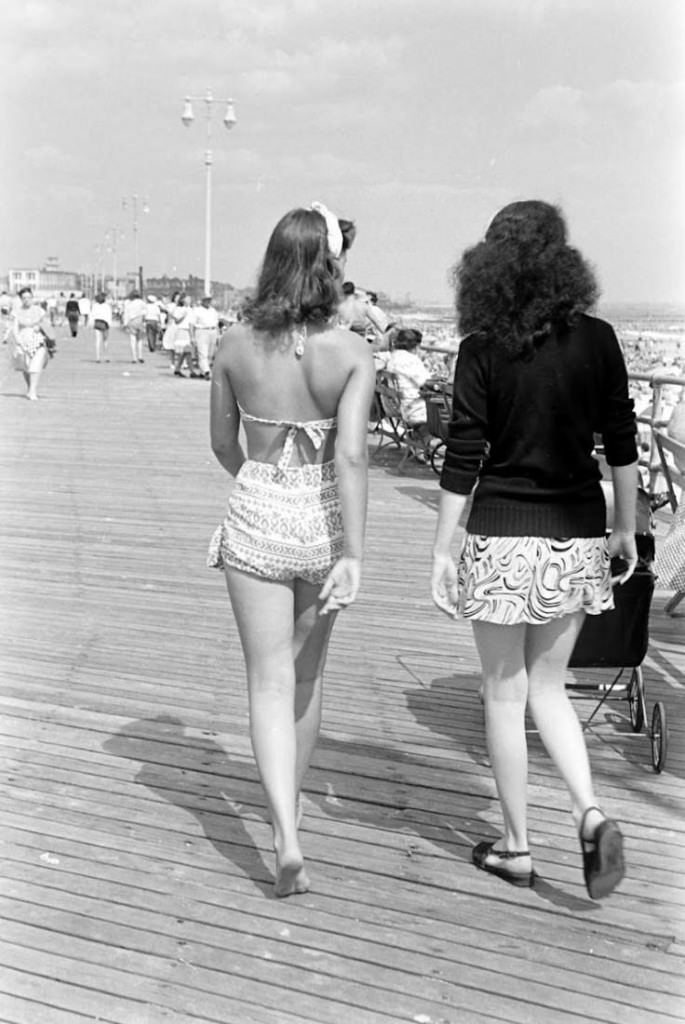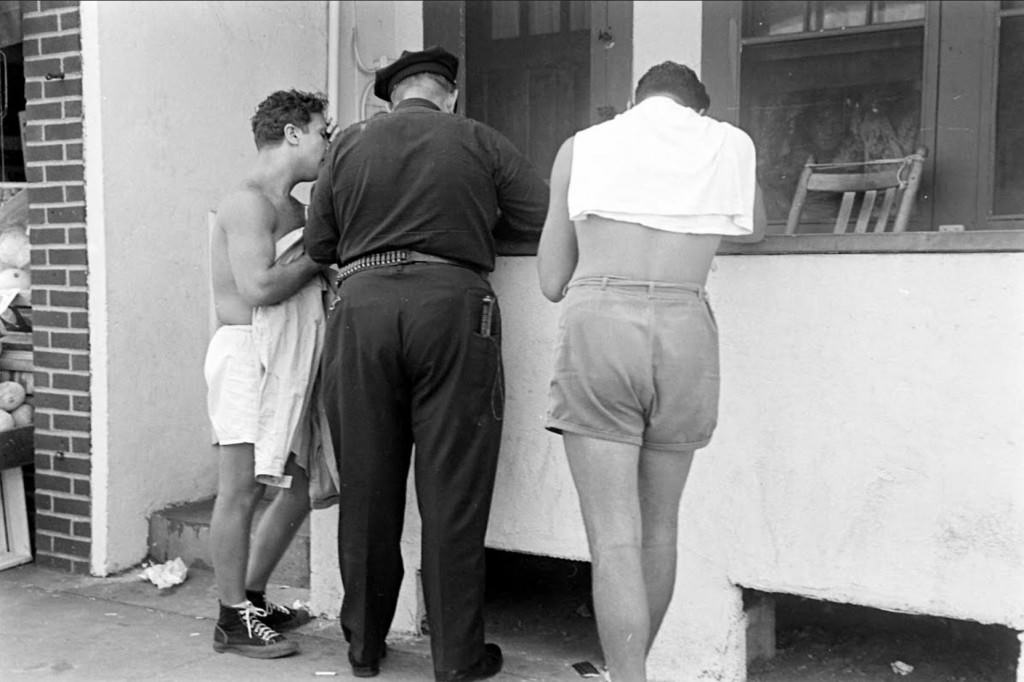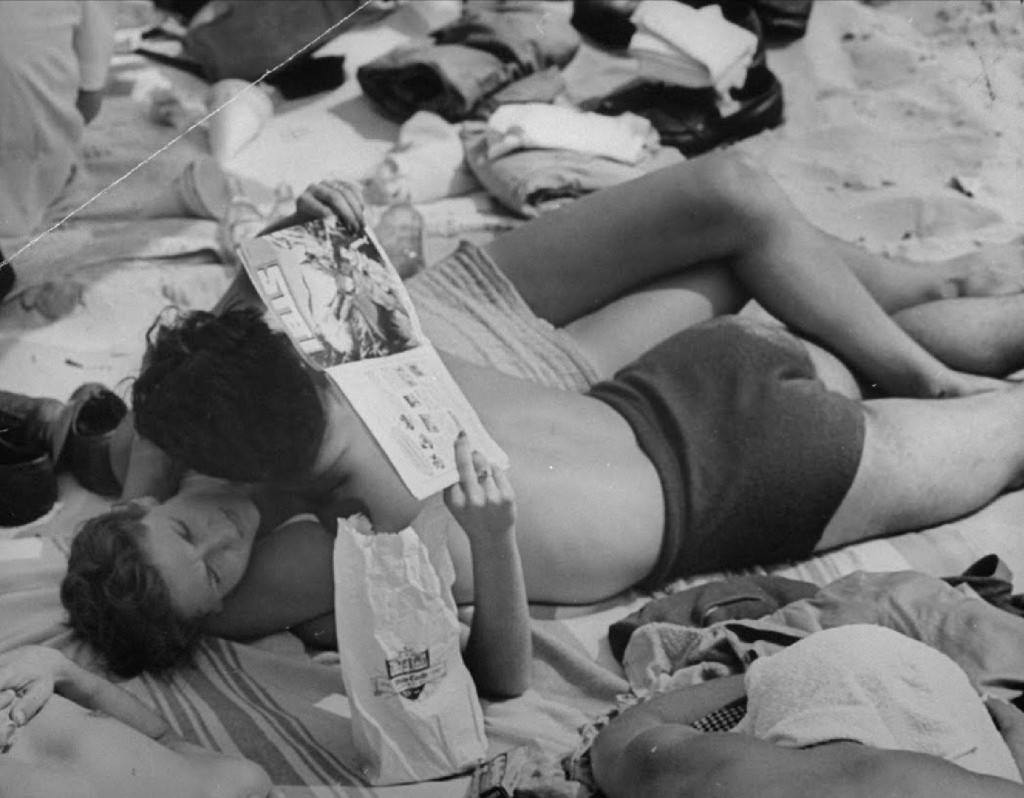LIFE magazine photographer Sam Shere captured the “indecent exposure” phenomenon at Rockaway Beach, New York, in 1946. The photographs show women sunbathing in high-waisted two-pieces, men walking the boardwalk in just their shorts, and beachgoers who appear unbothered by police tickets for “indecent exposure.”
The wearing of swimsuits anywhere except on the beach was considered “indecent” in 1946, so you had to wear a robe to and from Rockaway Beach. Most American seaside resorts had an ordinance in place in the early 1910s requiring bathing suits to cover shoulders and extend to the knees. A ballooning dress for women and a close-fitting bathing suit for men were designed exclusively for bathing. After leaving the water, bathers returned to the bathing establishment to wash and change.
In the mid-1910s, several factors converged to change this situation. Women fitted into one-piece swimsuits made of dark material and extended to their hips to make swimming easier. Some of these disrupted the established order, as did the one-piece swimsuit for men. In 1907, Annette Kellermann, the “Australian Mermaid” famous for her swimming achievements, was apprehended wearing this new costume on a beach near Boston. This helped popularize the outfit across the country. Furthermore, sunbathing was becoming fashionable among the middle and upper classes, encouraging people to reveal more of their bodies.
There were strict laws for men in Atlantic City, New Jersey; for example, they could not go to the beach or pool without a shirt. The reason for this law is that they didn’t want it to look as if there were “gorillas on our beaches”. Police could issue warrants for wearing bathing suits that were too short in 1922. They even had “bathing suit” patrolmen who measured bathing suits to ensure they were the correct length. There was a limit of 6 inches above the knee on bathing suits back then. In 1937, men began wearing swim trunks and no shirts to summer beach events for the first time.
Louis Read, a French mechanical engineer, introduced the bikini to the world in July 1946. The bikini design was inspired by women rolling up the edges of their swimsuits to tan better. Nevertheless, bikini sales failed to take off quickly because women preferred traditional two-piece suits. Due to the popularity of two-piece bathing suits, laws became less strict and more relaxed. However, the bikini trend grew slowly in popularity among upper class European women. During the 1960s, bikinis became more popular, primarily because of Bond Girl, Ursula Andress’s scene emerging from the ocean in a white bikini in Dr. No.


